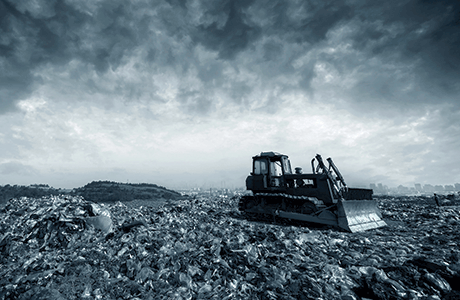
With the advent of more efficient waste processing methods and increasing landfill taxes, the days of landfilling may finally be numbered. The post-closure aftercare of these sites is being rethought at present, says Tom Passam of CPS Environmental Services.
AS operators continue to divert their waste streams down more sustainable avenues, it seems that most UK landfills could be closed within five years. But what will happen to them next?
Studies suggest that the widely adopted “dry tomb” approach could mean waste remains beneath the surface of a landfill for over a hundred years (RISC). It’s a situation that points to an expensive future for those liable, and a potential geological time bomb for future generations.
Ticking time bomb
If left to their own devices, landfills can be disasters waiting to happen. Leachate, silts and other toxic elements percolate and compound at the base, putting undue strain on the liner and increasing the risks of rupture. The waste becomes progressively drier and more inactive. Gas is often continually harvested at unsustainable rates. If continually mismanaged, oxygen can be drawn into the waste mass facilitating subterranean fires, burning (i.e. wasting) energy and adding a multitude of environmental problems.
Many operators have had to adapt to decreasing landfill profits and the accelerated decline in revenues from biogas due to mismanagement and the stagnant moisture within the site. The forward thinking few are also planning for extended 60 year post-closure provision, going well beyond the originally anticipated 30 year timescales.
Reducing a site’s aftercare period has suddenly become a very worthwhile pursuit.
Where most operators have largely been paying to treat and dispose of their leachate, a growing number of environmental consultants are now suggesting that most sites do not actually contain enough moisture to break down the dry waste that they contain, prolonging the potential aftercare period substantially.
The effectiveness of methods of landfill acceleration have long been disputed given the lack of scientific data, unknown site characteristics and the past impacts of badly managed systems. Leachate recirculation, chemical additives and pre-treatment have all been applied with varying results but, regardless, one fact remains true: accelerated degradation requires reliable containment, adequate capacity and continuous automated monitoring. Manual spot data can no longer offer a clear picture for landfill, and data is the key to efficient site management.
EA rethink on leachate
Leachate recirculation as a primary means of remediation is now being adopted by the Environment Agency. A draft guidance document has already been circulated within the industry and, after lengthy consultation with industry professionals, the EA is rethinking its approach and appears to be supportive of the use of new advances in process automation technologies, as a means to manage sites post-closure.
The benefits of recirculation are clear. It reduces the costs incurred in transit and treatment by redirecting effluent back to the site, wetting the waste and accelerating degradation. But it also creates a barrier for the prevention of gas egress, improving capture and air quality around the landfill, and lowering the impact on the environment.
Bioenergy now makes up approximately 70% of the renewable energy we use today (DUKES, 2014), with 15% coming from landfill gas and the largest contribution (21%) from biomass plants. Landfill owners looking at their declining gas curves may believe they have had their moment. But the truth is they could be sitting on an untapped energy resource.
CPS is taking a systematic approach to assisting its customers, installing automated systems tailored to manage all the necessary regulatory requirements of sites through the post-closure aftercare period. The result is a considerable costs saving for our clients – in the region of a 70% reduction in annual post-closure costs and up to a twofold increase in landfill gas production, providing an opportunity to drastically reduce the liability period.
Landfill sites have long been an “out of sight, out of mind” affair; even more so with closed sites. Fortunately sites can now be effectively managed from anywhere via the internet and many faults can be prevented before they occur thanks to advances in monitoring software. It is for this reason that many operators are outsourcing site leachate management to competent companies to allow them to focus on other sustainable waste management practices.






